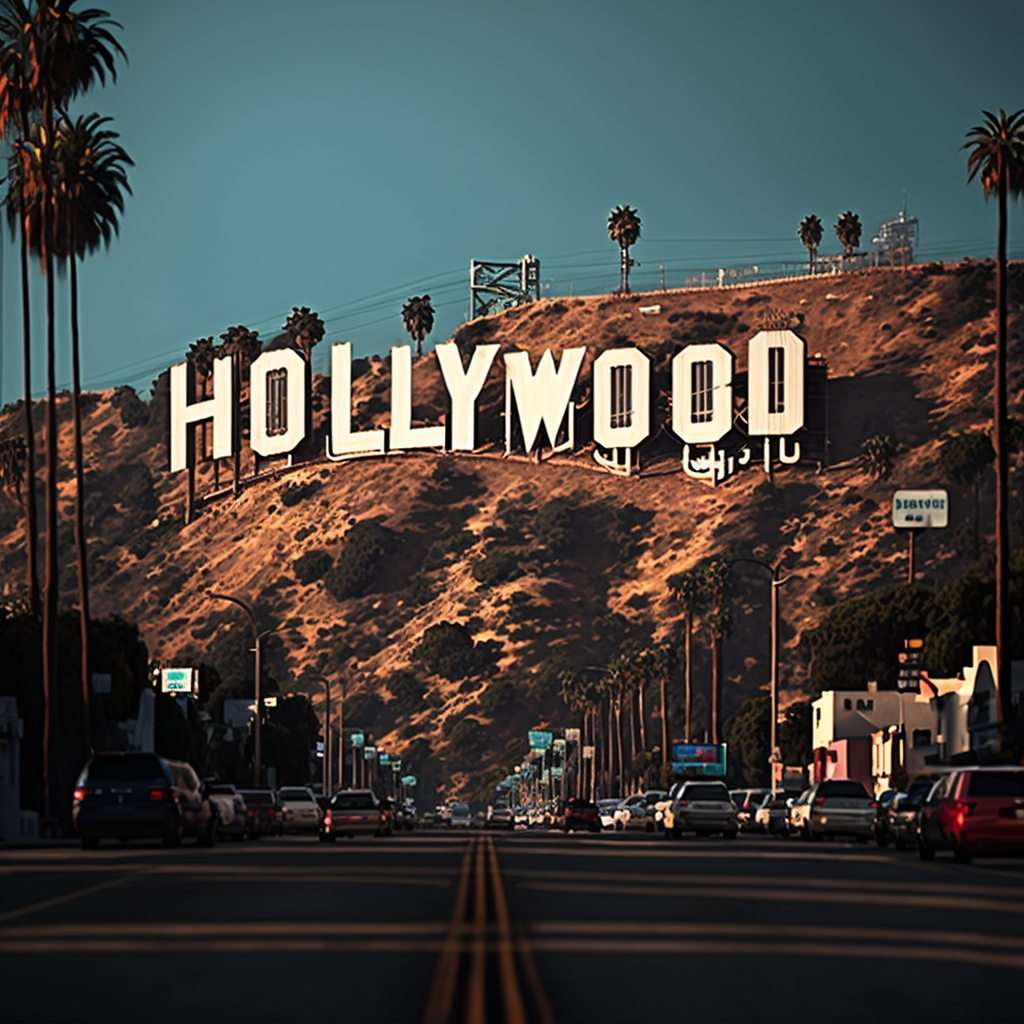Hollywood has not been an exception to the long-standing associations between gold and luxury and money. The Golden Age of Hollywood in the 1930s and 1940s, when the sparkle and glamour of the movies attracted viewers all over the globe, is when the entertainment business first developed an intriguing connection with gold. We’ll look at the history of gold in the entertainment sector in this piece, as well as why it’s still seen as a status symbol.

Without Gold worldwide, Hollywood industries would have lost millions of dollars; why am I saying that? Because Hollywood has made many films on the topic of Gold and treasure and made good money, with their earnings some A list of the most popular ones is:
| Movie Title | Release Year | Box Office Revenue |
|---|---|---|
| The Treasure of the Sierra Madre | 1948 | $4.1 million |
| Goldfinger | 1964 | $125 million |
| How the West Was Won | 1962 | $50 million |
| The Good, the Bad and the Ugly | 1966 | $38 million |
| Mackenna’s Gold | 1969 | $41 million |
| Paint Your Wagon | 1969 | $31 million |
| The Towering Inferno | 1974 | $116 million |
| The Deer Hunter | 1978 | $50 million |
| Raiders of the Lost Ark | 1981 | $389 million |
| Romancing the Stone | 1984 | $115 million |
| Indiana Jones and the Temple of Doom | 1984 | $333 million |
| A Fish Called Wanda | 1988 | $63 million |
| Die Hard | 1988 | $140 million |
| Lethal Weapon 2 | 1989 | $227 million |
| The Hunt for Red October | 1990 | $200 million |
| Backdraft | 1991 | $152 million |
| Unforgiven | 1992 | $159 million |
| Cliffhanger | 1993 | $255 million |
| Jurassic Park | 1993 | $1.029 billion |
| The Mask of Zorro | 1998 | $250 million |
| The Mummy | 1999 | $415 million |
| Gladiator | 2000 | $460 million |
| Ocean’s Eleven | 2001 | $450 million |
| The Lord of the Rings: The Fellowship of the Ring | 2001 | $871 million |
| Pirates of the Caribbean: The Curse of the Black Pearl | 2003 | $654 million |
| National Treasure | 2004 | $348 million |
| The Da Vinci Code | 2006 | $758 million |
| There Will Be Blood | 2007 | $76 million |
| The Hurt Locker | 2008 | $49 million |
| The Revenant | 2015 | $533 million |
Not simply a 30-film list, since many movies have been released throughout the years that include these themes to some degree, making it impossible to pinpoint the precise number of Hollywood films concerning Gold or treasure. Nevertheless, it is acceptable to claim that this genre has hundreds of films that span multiple decades and have many plots and characters. The success of these films is evidence of the lasting appeal of treasure seeking and the attraction of striking it rich, even in the setting of fantastical storytelling.
Here are some common historical dates related to gold events and Hollywood events:
Gold Events:
2600 BC: The first gold jewellery was crafted in Mesopotamia
1848: The California Gold Rush began
1971: US President Nixon ended the gold standard
2011: Gold reached an all-time high of over $1900 per ounce
Hollywood Events:
1927: The first “talkie” movie, The Jazz Singer, was released
1939: The release of classic movies such as The Wizard of Oz and Gone with the Wind
1948: The Paramount Decree was issued, which separated movie studios from theatre ownership
2006: The release of the first movie in the Marvel Cinematic Universe, Iron Man
But beyond this, there are many topical similarities between Gold and Hollywood. So let’s find out what similarities are hidden.
In 1927, significant events occurred in the gold industry and Hollywood. The Homestake Gold Mine became one of the largest Gold producers, and the Bank of Nova Scotia established its gold department, reflecting Gold’s importance in global finance. The year also saw the early signs of the Great Depression and the opening of the Federal Reserve Bank of Chicago. In Hollywood, “The Jazz Singer” revolutionized filmmaking as the first “talkie” movie, while “Wings” showcased technological advancements, winning the first Academy Award for Best Picture. These events marked important milestones in their respective fields.
At the Hollywood Roosevelt Hotel, on May 16, 1929, the first Academy Awards presentation took place. Three months before to the event, the winners were revealed, and the prizes were distributed over a banquet supper. The Oscar statuette at the time was composed of bronze that had been gold-plated. The statuettes weren’t generally constructed of gold-plated Britannia metal until 1983.
Important things happened in the Gold business and Hollywood in 1939. The commencement of World War II influenced gold prices as nations accumulated Gold as a hedge against inflation and currency changes. Gold prices increased as a result of the depreciation of the British pound. The unlawful production of “double eagle” gold coins at the US Mint in Philadelphia caused controversy the same year.
With the release of iconic movies like “Gone with the Wind,” “The Wizard of Oz,” “Mr Smith Goes to Washington,” and “Wuthering Heights,” 1939 was regarded as a “golden year” in Hollywood. A record-breaking eight Oscars for “Gone with the Wind” were given out during the 11th Academy Oscars ceremony. The Hollywood Anti-Nazi League was established to spread knowledge about fascism and promote anti-Nazi legislation. The start of World War II affected the movie business as well since performers and directors had to deal with censorship and distribution issues on a global scale while supporting the war effort.
Important things happened in the Gold business and Hollywood in 1948. The Bretton Woods system, which linked the value of the US dollar to Gold, was put in place when the IMF was created, fostering global monetary cooperation. The Perth Mint started making gold bars and coins and became a significant worldwide supplier of Gold.
Hollywood’s Paramount Decree removed the big studios’ monopoly on distribution, opening doors for indie producers. Hollywood was indirectly impacted by the Marshall Plan’s creation of chances for international partnerships, which was intended to reconstruct the economy of Western European countries. These changes in 1948 reflected the post-war state of the world as well as the shifting social and economic conditions of the day.
Important things happened in finance and Hollywood in 1971. The divisive movie “A Clockwork Orange” was released, winning praise from critics and growing in popularity. Additionally, “Dirty Harry” made its premiere, popularising the “vigilante cop” subgenre and rising to fame. In addition, the “New Hollywood” trend started, characterized by works by experimental and independent filmmakers like Scorsese, Coppola, and Altman. The Bretton Woods banking system ended when US President Nixon abolished the gold standard, enabling currencies to float freely and have their values set by supply and demand.

Iron Man, the first film in the Marvel Cinematic Universe, was released in 2006. As Marvel Studios started making a string of linked superhero movies that have become some of the most popular movies in history, this event signalled the start of a new era in Hollywood. Due to its commercial success, other studios are attempting to imitate the Marvel Cinematic Universe’s model for building successful blockbuster series.
The gold market had important developments in 2006. Because of geopolitical unrest, inflation worries, and investor demand, gold prices rose to their highest level in 26 years, reaching $730 per ounce. A physical gold ETF was introduced, opening up the market for gold investments. As central banks switched from net gold sellers to net purchasers to diversify their holdings and mitigate risk, the Dubai Multi Commodities Centre (DMCC) emerged as a significant centre for gold trading, which helped maintain the stability of the world gold market.
2011 saw a strong relationship between world events and the gold market. Due to rising demand, political unpredictability, and economic uncertainty, gold prices rose to an all-time high of almost $1,900 per ounce. Occupy Wall Street demonstrators promoted alternative investments, including Gold, which inadvertently impacted gold prices. The cultural importance of Gold was highlighted in the movie “The Descendants,” and the ongoing expansion of gold-backed ETFs made it simpler for investors to enter the gold market, enhancing its liquidity as an investment.
The entertainment sector had several noteworthy events in 2011. The silent, black-and-white movie “The Artist,” which won the Best Picture Oscar, pays tribute to early filmmaking. During the same year that the last “Harry Potter” movie was released, Hollywood legend Elizabeth Taylor died away. Media consumption was revolutionized with the emergence of streaming services like Netflix and Hulu Plus. Steve Jobs, a co-founder of Apple and a prominent entertainment business player, left a lasting mark on media consumption with his ground-breaking innovations before he died away.
Humans have been intrigued with Gold for millennia, and many books and movies have been inspired by it. From the late 1800s, Gold rushes to the Wild West; Gold represents riches, power, and adventure. Novels like “The Call of the Wild” by Jack London, “Treasure Island” by Robert Louis Stevenson, and “The Goldfinch” by Donna Tartt are some of the most well-known examples of fiction with a gold theme. Numerous movies, TV series, and stage musicals have adapted these texts, which explore themes of greed, betrayal, and redemption. The classic movie “The Treasure of the Sierra Madre” (1948), the James Bond film “Goldfinger” (1964), and the Academy Award-winning movie “The Revenant” are among the more well-known works with a gold theme. (2015). These literary pieces each provide a distinctive viewpoint on the attraction of Gold and the human yearning for money and power.
In conclusion, the interesting interplay between Gold and Hollywood has forever changed the entertainment business. Hollywood has created many Gold and treasure-hunting-related movies, many of which have succeeded at the box office. These themes’ ongoing popularity is proof of peoples’ infatuation with riches, power, and adventure.
Additionally, Gold has been linked to significant historical occurrences in the financial and entertainment industries. Both sectors have been impacted by major turning points like the Bretton Woods agreement, the end of the gold standard, and the appearance of the Marvel Cinematic Universe. Literature, film, and other kinds of entertainment have emphasized the cultural importance of Gold, indicating its continuing appeal.
Overall, Hollywood continues to create movies and TV series about the hunt for treasure and wealth, proving that the appeal of Gold is still as powerful as ever. Hollywood’s glitter and glamour may seem like a great cry from the grimy world of the gold mine, yet the human drive for success and fortune connects the two.
